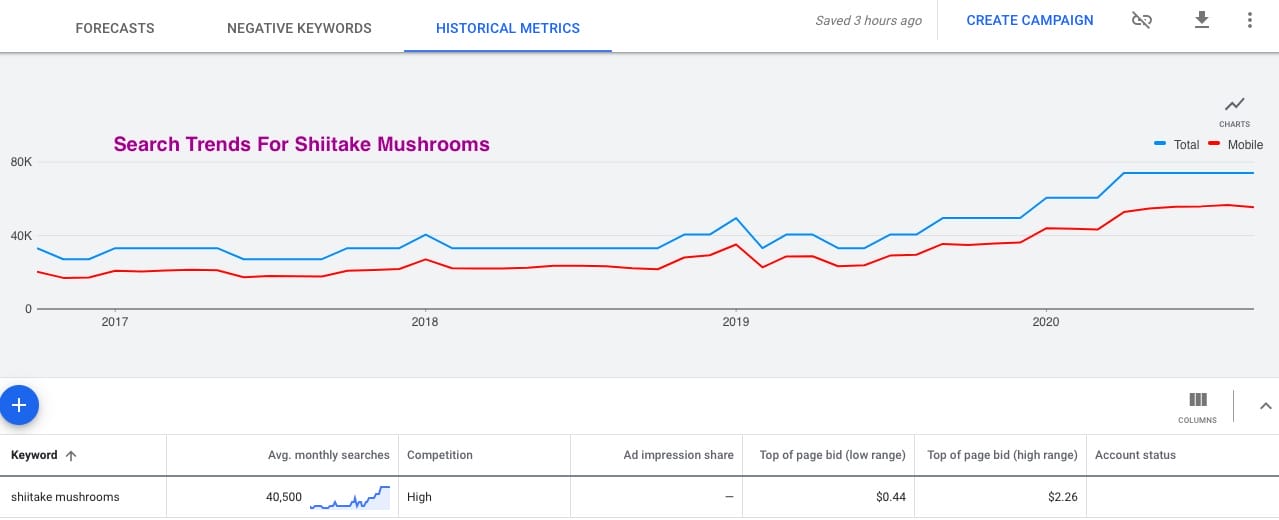The Mushroom Business Opportunity
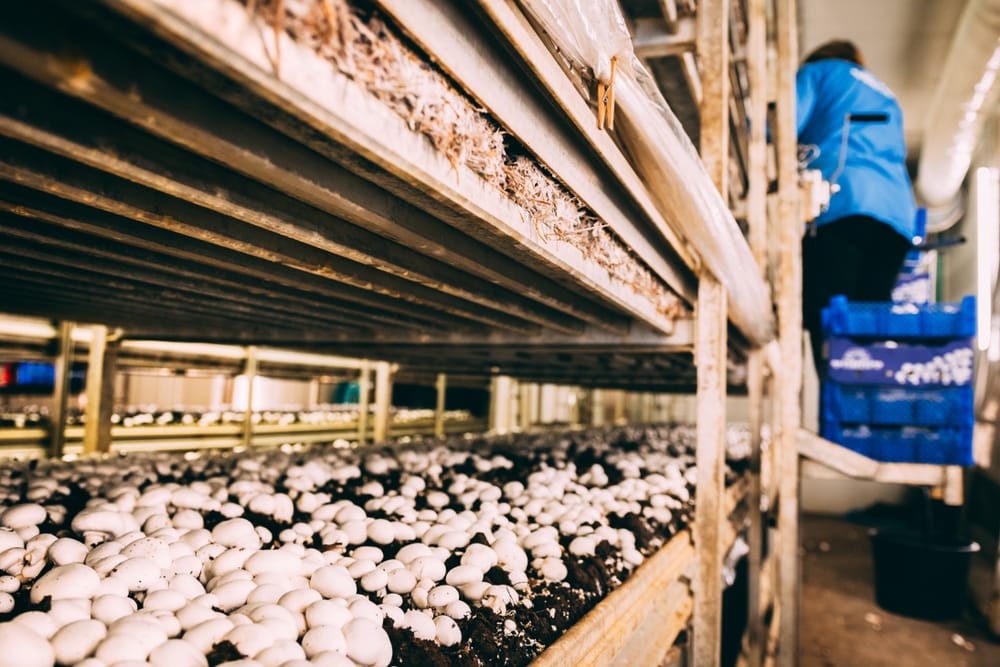
With proper planning and distribution of costs, you can earn a profit margin of over 50% gross margin for a mushroom farm. This profit is before accounting for labor and overhead costs. However, this high margin requires cheap labor, minimal equipment, favorable weather, and low-cost operations.
A small-scale operation only costs a couple hundred to set up, as it requires minimal equipment. As long as you have a dark room or a shady backyard, you can set up the spawn on a substrate to cultivate mushrooms. Once you are comfortable with the process, you can consider expanding to a more commercial management style, hiring employees to increase yields.
Oyster and shiitake are some of the most profitable gourmet mushroom varieties. You can grow them indoors so that you can partake in this industry anywhere. They require humidity and minimal care during the mycelium colonization process, and you can fruit from the same substrate multiple times. Still, you will need to dedicate some time to learning the ins and outs of mushroom farming, and it could take some time to start a profitable business.
Mushroom Market Demand
The market is on the rise as consumers become more health-conscious and willing to explore foreign cuisine. As a result, you can sell your mushrooms to restaurants, grocery stores, and even directly to people through farmer's markets.
As you can see from the charts below, the searches are trending up in the last few years for some of the more gourmet mushrooms.
Google Search Trends For Oyster Mushrooms
With the foodie movement only gaining steam, it looks like fancy mushrooms are on American menus for the foreseeable future. So, how can you capitalize on this ‘growing' trend?
Here's our 7 step guide to growing mushrooms for profit:
Table of Contents
- The Mushroom Business Opportunity
- 1. Learn How Much Money You Can Make Growing Mushrooms
- 2. Find the Most Profitable Mushrooms to Grow
- 3. Determine The Best Climate for Mushroom Growth
- 4. Get Your Mushroom Growing Equipment
- 5. Start to Grow and Cultivate Mushrooms
- 6. Learn How to Harvest and Sell Mushrooms
- 7. Find Your Customers
- Tips for Success when Growing Mushrooms for Profit
- Pros and Cons of Growing Mushrooms for Profit
- Should You Start a Mushroom Growing Business?
1. Learn How Much Money You Can Make Growing Mushrooms
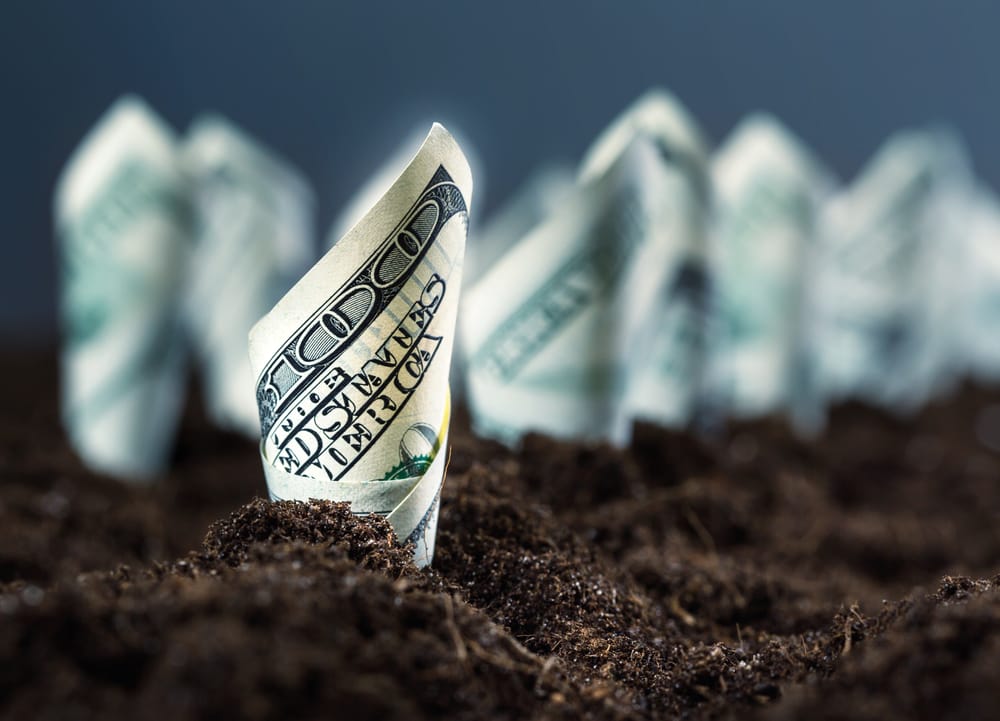
These days, mushroom farming has a high market as they grow in popularity, and expensive mushroom species can earn you a hefty profit. Nevertheless, if you are only looking to start a small backyard farm, you can easily make it a side hustle. Your level of involvement will significantly alter your revenue, but you can choose just how much you are willing to make.
If you are looking into growing mushrooms for profit full-time, you can expect the global mushroom market to grow to 20.84 million tons by 2026, with a compound annual growth rate of 6.41%. There are several market drivers at play. As society becomes more health-conscious, they look towards nutritious foods. Mushrooms have a low fat and cholesterol content while being full of micronutrients like potassium, selenium, riboflavin, and vitamin D.
The foodservice industry has a higher demand for mushrooms in hotels and restaurants, as well as grocery stores. They can substitute meat. As more people adopt a vegan lifestyle, they require more mushrooms for their diet, both raw and processed. Market exports project the processed mushroom market to grow by 9.30% between 2020 and 2027.
You can find processed mushrooms in vegetarian mushroom jerky, veggie burgers, and seasonings. People frequently eat mushrooms in dried or pickled form as well. Growing kits are another product that utilizes cultivated mushrooms. They are a tasty way to add a meaty texture to vegan dishes while contributing their own nutritional value.
Trends in Commercial Mushroom Farming

Many Asian countries have more export opportunities at this time as they produce the most mushrooms. By starting a mushroom farm in a Western country, you can help the environment by reducing the food's travel time while also tapping into a high revenue supply. If you engage in commercial farming, you may be able to export your crops as well.
The Asia Pacific has the largest per capita consumption of mushrooms, and they are the most extensive global producers. Increasing production has increased the demand in other Asian countries as well. However, European mushroom production and consumption are witnessing the fastest growth as the populations demand nutrient-dense foods for cooking and holistic medicinal purposes.
North America isn’t far behind as the mushroom market is experiencing significant expansion. Furthermore, the US is one of the premier producers of button mushrooms, which have the most significant market share.
Income for Part-Time Mushroom Growing
One of the easiest to grow and most profitable gourmet mushrooms is the oyster mushroom. In a 500 square foot plot, you can produce about 12,000 pounds of oyster mushrooms per year. They usually cost about $6 per pound wholesale and $10 per pound retail. This pricing means you can make between $72,000 to $120,000 a year, depending on who gets your mushrooms.
For part-time mushroom farmers, a 100 square foot plot can harvest about 2,400 pounds per year, helping you make $14,400 a year wholesale or $24,000 retail. Now that’s a good side hustle!
It is most reasonable to use mushroom farming for supplementary income. While the market is growing, you are best suited to growing the mushrooms in your home or backyard unless you want to hire employees for a commercial farming operation. If you devote your basement, garage, or some other clean, dark, empty room to it, you can easily make a few thousand dollars extra each year.
The best part of being a part-time mushroom farmer is that it only takes a few hours a week to tend to the crops. These fungi are low-maintenance, and you’ll only have to check in on them a few times a week.
The hardest part would be finding a customer base, but once you find one, you will be able to focus all your time on growing the most delicious mushrooms.
Whatever species you opt for, there are some basics to growing mushrooms for profit to keep in mind when considering venturing into this business.
2. Find the Most Profitable Mushrooms to Grow
The most profitable gourmet mushrooms to grow are the oyster and shiitake mushroom varieties.
Oyster Mushrooms
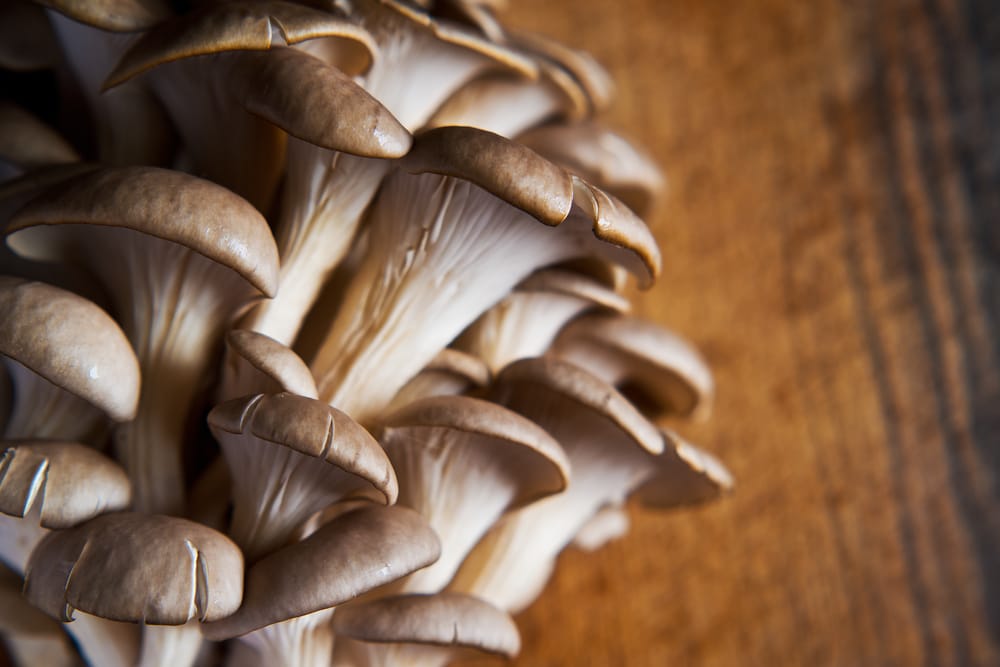
Food lovers regard oyster mushrooms for their meaty texture and unique flavor. Many chefs use them to color their dishes, and they are a staple of Asian cuisine. However, they must be used immediately after harvest unless dried.
With fiber, protein, B vitamins, choline, vitamin D, copper, iron, magnesium, manganese, phosphorus, potassium, selenium, and zinc, oyster mushrooms are a nutritional powerhouse.
Shiitake Mushrooms

Nutritionally speaking, cooked shiitake mushrooms contain some fiber, various B vitamins, vitamin D, copper, zinc, selenium, and manganese. These mushrooms aren’t the easiest for new growers, but you can cultivate them inside. Also, they are a well-known variety, improving their marketability.
Check out our full list of the Most Expensive Mushrooms in the World
How Much Can You Make Growing Oyster or Shiitake Mushrooms?
Both oyster and shiitake mushrooms have a retail value of $10-$12 per pound and a wholesale price of $6-$8 per pound. In stores and markets, you can usually find oyster mushrooms for $5 to $15 per pound and shiitake for $12 to $24. Many chefs want to buy large quantities of locally-grown, gourmet mushrooms at retail prices for better taste and quality. This practice improves profits while staying environmentally-friendly.
Oyster and shiitake mushrooms work well for part-time and full-time growers. You can cultivate them anywhere, and they have a consistently high market value. They are considered gourmet, further increasing their wholesale and retail costs, cementing them as two of the most profitable mushrooms for beginning mushroom farmers.
3. Determine The Best Climate for Mushroom Growth

Since oyster and shiitake mushrooms can be grown inside, you do not need to worry about the climate. Any reasonably sized shed, greenhouse, garage, basement, or barn could work. Overall, with these varieties, the outdoor environment has little impact on their ability to grow.
Naturally, mushrooms grow in moist environments. Oyster mushrooms grow in a variety of climates, warm and cold. Pearl oysters, blue oysters, and king oysters sprout from forest logs and stumps in cold temperatures. Phoenix oysters, golden oysters, and pink oysters prefer warmth. Shiitake mushrooms grow best on decaying deciduous trees in the warm, moist region of Southeast Asia.
Climate is more important if you plan on growing the mushrooms in your backyard, but as long as you keep them moist and in the shade, they shouldn’t have a problem with growth.
4. Get Your Mushroom Growing Equipment
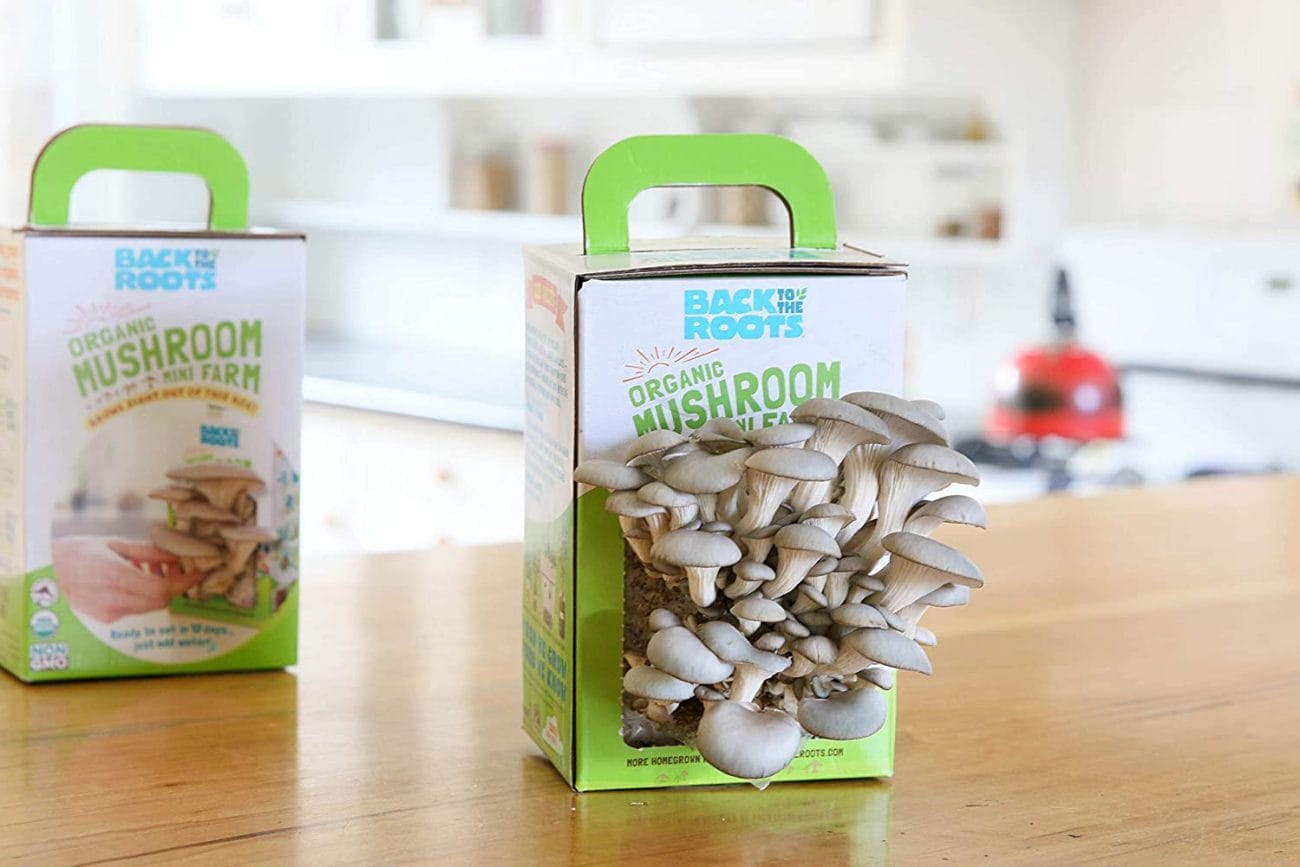
To start growing mushrooms for profit, you will need some equipment:
- Growing bags
- Mushroom spawn
- Plug spawn
- Substrate
- Log (If you choose the log method)
- Wax
- Wax dauber
- Hammer
- Water
5. Start to Grow and Cultivate Mushrooms
You can grow and cultivate mushrooms indoors in plastic bags or outdoors on logs.
Plastic Bag Method

To begin mushroom farming, you must first prepare the substrate or compost. The substrate is the substance in which you grow the mushrooms. They use the substrate for energy and nutrition, and different mushrooms have differing needs.
Typical substrates include straw, hardwood sawdust, manure, coir and vermiculite, and even coffee grounds. Oyster mushrooms can grow in just about any substrate, but shiitakes need wood shavings. They prosper on oak, but maple, beech, and ironwood work as well.
Preparing the substrate requires you to cut the material into small, short pieces and wet it. Then, you heat the material in boiling water for 30 minutes. Finish by removing it from the water, draining it, and spreading it on a clean surface to cool. This process sterilizes the substrate, eliminating bacteria and mold that may grow in the moist location.
Pack the cooled substrate into plastic bags. Put two to three inches of it and sprinkle the spawn, or live mycelium culture, on top. Spawn is akin to seeds. Layer the substrate and spawn until the bag is full. Close the bag and poke holes in it for aeration.
Incubation
Next, incubate the spawn in a warm, dark area. Ideally, you should check on the bags with a darkroom light to prevent light exposure. It would be best if you kept them in the darkroom until you see pinhead mushrooms close to the air holes. You won’t need to water or upkeep them in this phase. It takes about seven to eight weeks for the shiitake mushrooms to mature and two weeks for oysters.
With shiitakes, the white mycelium means that they need to brown for two more weeks. The mycelium should all be brownish before fruiting. For oysters, lots of white mycelium indicates it is time to fruit.
To fruit the mushrooms, you will need a high humidity level. The temperature should be slightly cooler than room temperature. Also, the mushrooms will need more light than in the incubation stage. Usually, they need some sort of shocking to begin fruiting.
Oyster mushrooms grow best when incubated in warm, humid, dark rooms and fruited in autumn-like conditions with cooler temperatures, high humidity, low-level light, and fresh oxygen. Once you have exposed them to the cool moisture, the pins will rapidly grow and become full-sized mushrooms in a week. A batch of mycelium can take about three harvests before needing replacement, meaning you can grow three crops in five to eight weeks.
Shiitake mushrooms grow in bags at room temperature, and once the mycelium has fully colonized, place the spawn in a humid area with lots of fresh, clean airflow. You will need to mist the spawn several times a day to stay moist. The bag can produce three to five mushroom batches before needing a new mycelium base.
Log Method
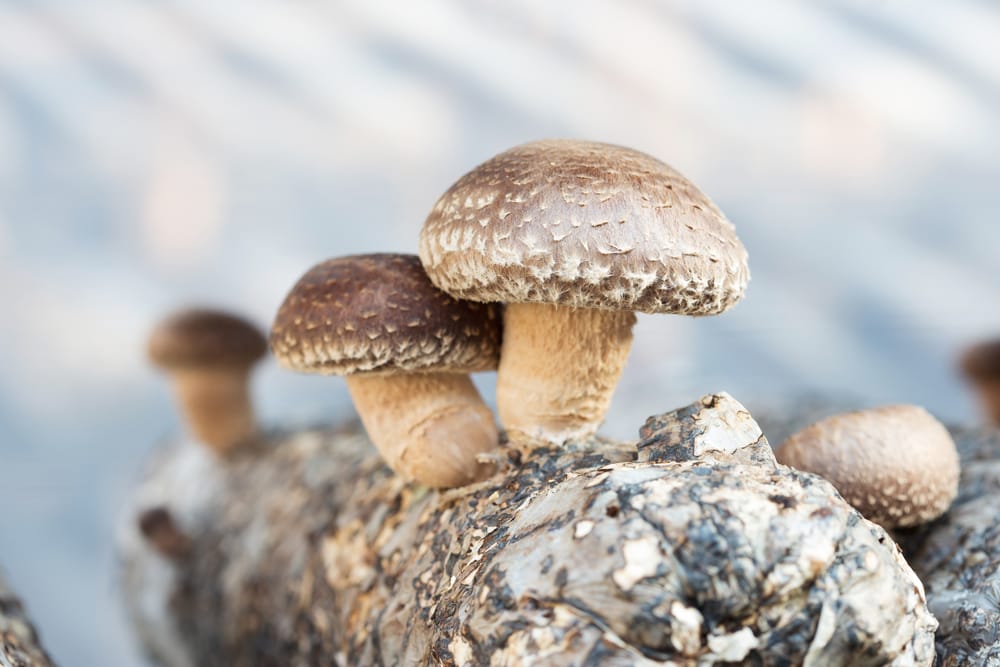
In the wild, mushrooms grow on logs with fresh, oxygen-filled air. Shiitake mushrooms prefer oak, sugar maple, and red maple, while oysters prefer white birch. They also grow well on alder, oak, beech, birch, poplar, maple, balsam, willow, elm, and aspen logs.
The log method takes much longer, as the mushrooms take six months to two years post-inoculation to harvest. However, the same log can grow mushrooms for six to seven years.
The best time of year to cut down logs is in the fall or winter because of the higher sugar concentration and the decreased risk of the bark breaking off. In terms of size, the larger the log, the longer for the mycelium to colonize. The tradeoff is that lengthier stumps will produce mushrooms for more time. Lengths between three and four feet long with a three to ten-inch diameter are ideal.
Innoculation
To inoculate them with mycelium, you will need a plug or bulk sawdust spawn. Plug spawn is the best option for beginners since you drill holes into the log and hammer it in. Make sure to inoculate a stump within a month of its harvest. A four-foot log will need 30-50 plugs. Drill a row of holes every six inches down its length, leaving two inches at each end. The holes should be about an inch deep.
Place the plug spawn into the hole and gently tap it with a hammer for full insertion. Sawdust spawn needs a spring-loaded inoculation tool. Seal the hole up with wax. Common types include cheese wax, candle wax, and beeswax. Heat it up and melt it, using a wax dauber to put it in the holes. If you don’t have a dauber, use a cotton ball, cloth, or small brush.
Store the inoculated logs in a shady, elevated place. If you live in a moist climate, water them once a week for ten minutes. In a dry environment, water them twice a week. If the temperature is below freezing, avoid wetting the logs.
Naturally, the log will produce mushrooms within two to three years of inoculation. To speed up the process, wait at least six to nine months and shock the stumps. First, you will need to place them in cold, clean water for 24 hours. Afterward, you bring them back to the shady spot and stand them upright. Within two weeks, primordia will grow, and these will form the mushrooms. Water the logs twice a day for at least five minutes until they sprout.
6. Learn How to Harvest and Sell Mushrooms
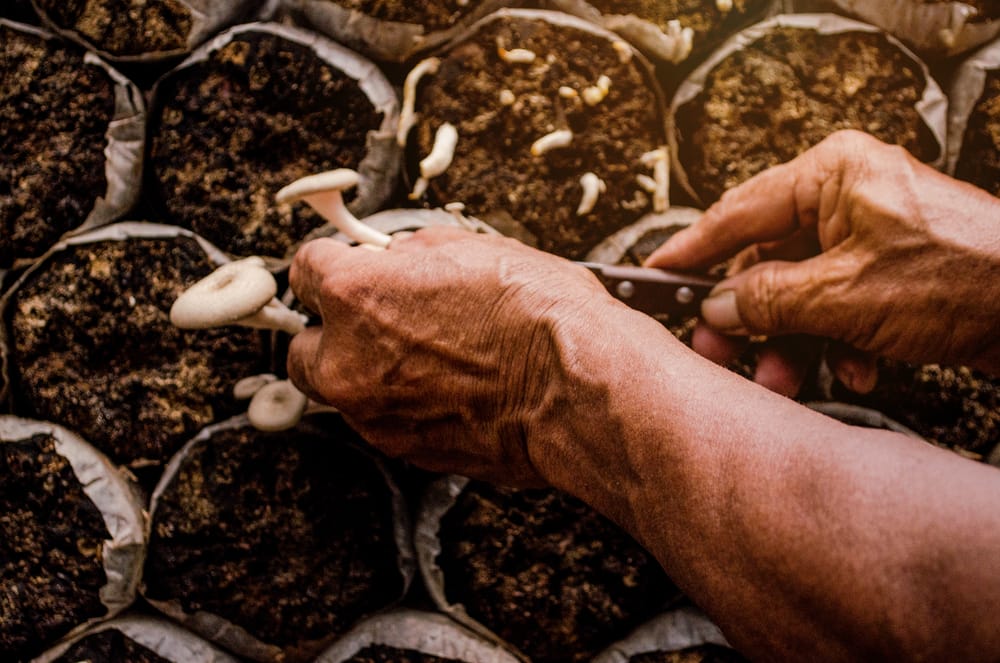
The best time to harvest mushrooms is right before the caps uncurl. To do so, you only have to twist the stem off close to the growing block. Some will require a sharp knife to slice the mushroom at the base. It’s imperative to use sterile equipment for harvesting, wearing gloves and a mask. Clean off any substrate material before selling.
For added health benefits, you can boost the vitamin D content in the fresh mushrooms by putting the gill side up in direct sunlight for 24-48 hours after harvesting. The D2 levels increase from 100 IU to 46,000 IU per 100 grams.
Since these mushrooms do not hold up for long, you will need to sell them fresh to local customers or dry them. After their harvest, you can sell them to local chefs, grocery stores, restaurants, hotels, and farmer’s markets. To sell internationally, they would need to be dried.
7. Find Your Customers

A convenient place to sell your mushrooms is at a local farmer's market. There you will find tons of people looking for locally-grown produce. Find out how to set up a tent or booth, rent that space, and sell away.
You can also sell directly to grocery stores. Many supermarkets have a local produce section to support small farmers. Especially because oyster mushrooms do not ship well, stores prefer to buy them locally.
One way to gain new customers is by offering free samples. You can saute your mushrooms and give them to passersby. Once they taste how delicious your fresh mushrooms are, they will be twice as likely to buy them. See if you can set up a booth at a grocery store to do this. If you have a farmer’s market booth, you can easily offer a taste.
Another place to sell your mushrooms is to restaurants and hotels. Chefs prefer buying local produce for the flavor and freshness. Also, they purchase large quantities at a time to keep up with restaurant demands.
Whether you grow them part-time or full-time, you can grow mushrooms for profit.
Tips for Success when Growing Mushrooms for Profit
Keep these tips in mind for a lucrative mushroom business.
- Prevent diseases from plaguing your crops. Many viral, bacterial, and fungal infections can destroy plants, which can lower your profit margin exponentially.
- Having a decent management system will help with cultivating, harvesting, and selling the mushrooms. If you are commercially farming, you will likely have employees you will need to keep on track to meet yield goals.
- Work on advertising and marketing. When free samples don’t cut it, you will have to advertise. Useful advertising schemes include Facebook or Google ads and partnerships with blogs or companies. You can cheaply get the word out there about your mushroom farming.
- The longer you’re in the industry, the more money you will make. A combination of perfecting your technique and a growing customer base means that you will earn greater profits each year.
- Keep your spending in check. Purchasing mushroom spawns can add up, so you may want to learn how to create your own. Also, try to keep labor and overhead costs low. Look into sharing equipment. Growing your mushrooms inside means that you will have complete control over the environment, helping you maintain crop health.
- Collect data on your crops. Data collection will help you determine the best practices to grow excellent mushrooms. From there, you can find the ideal substrates, incubation periods, and harvesting methods for great-tasting food.
Pros and Cons of Growing Mushrooms for Profit
Mushroom farming has its positive and negative aspects.
Pros:
- Mushroom farming does not require a particular environment to grow in. You can even grow mushrooms in your bedroom!
- It makes for a profitable side hustle or full-time job. It all depends on your resources and time commitment.
- The initial cost is relatively low. If you start small, you may only need to spend a few hundred dollars.
- You can grow mushrooms in nearly anything, even coffee grounds. While not all species can grow in all substrates, there is a lot of variety.
- Producing at home may take as little as a few weeks to sprout delicious mushrooms.
- You can use the same substrate for multiple harvests. You can get three crop yields from a plastic bag and seven years worth from a log.
- A small-scale mushroom farming operation requires only a few hours a week to cultivate and sell a crop.
Cons:
- It can take years for a log to start producing mushrooms, making it more tedious to profit
- If cultivating spawn, you will need a sterile laboratory to grow the mycelium. It needs to be cleaned with bleach to remain germ-free.
- Premade spawns can be costly and are impractical for large-scale farmers. However, cultivating your own is difficult and requires a greater learning curve.
Should You Start a Mushroom Growing Business?
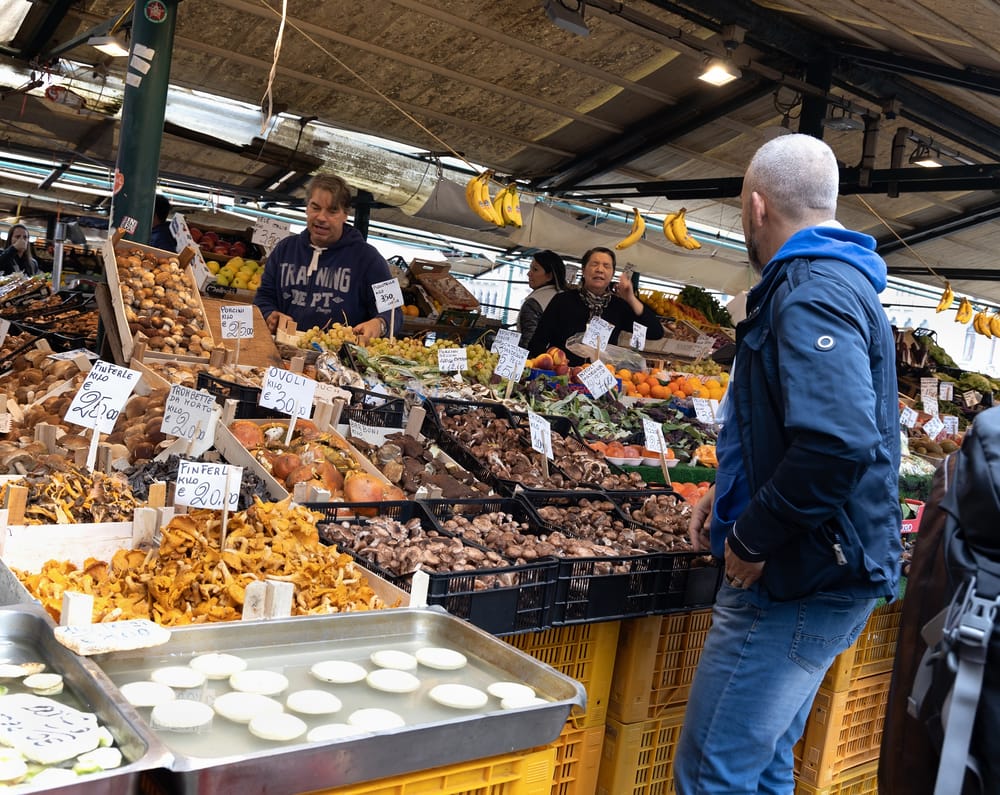
Growing mushrooms for profit can be an easy way to make some extra cash. If you want, you could even turn it into a full-time career. It's not easy, but you can get started for little costs and grow at your own pace. Dipping your toe into the mushroom water may be a good place to start before you go all-in.
If you have been wanting to start a business, this would be a great way to enter entrepreneurship. It also makes as a good side-hustle for those just looking for a hobby that brings in some additional income.
The foreseeable future shows an increasing demand for mushrooms of all varieties; if you are fascinated by this opportunity, you should consider mushroom farming.


